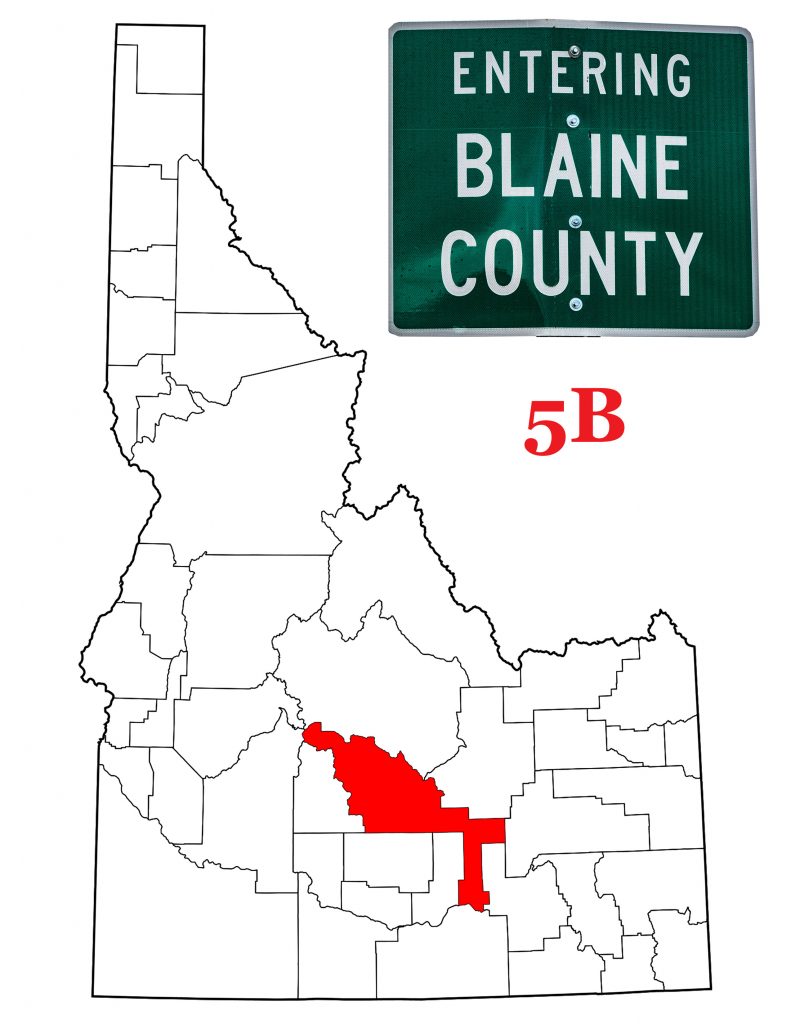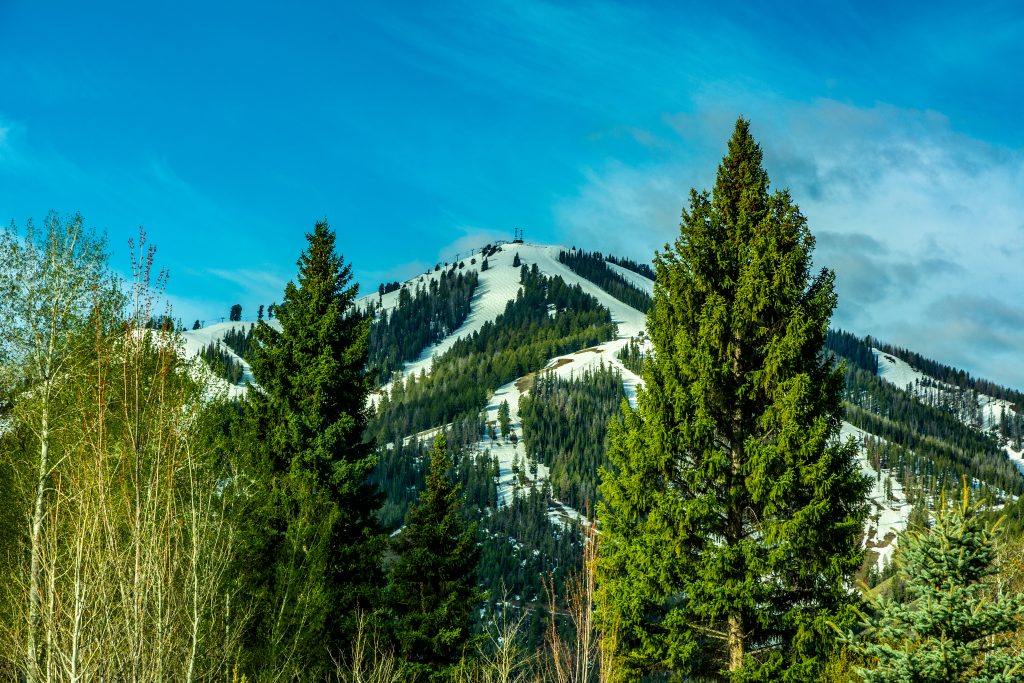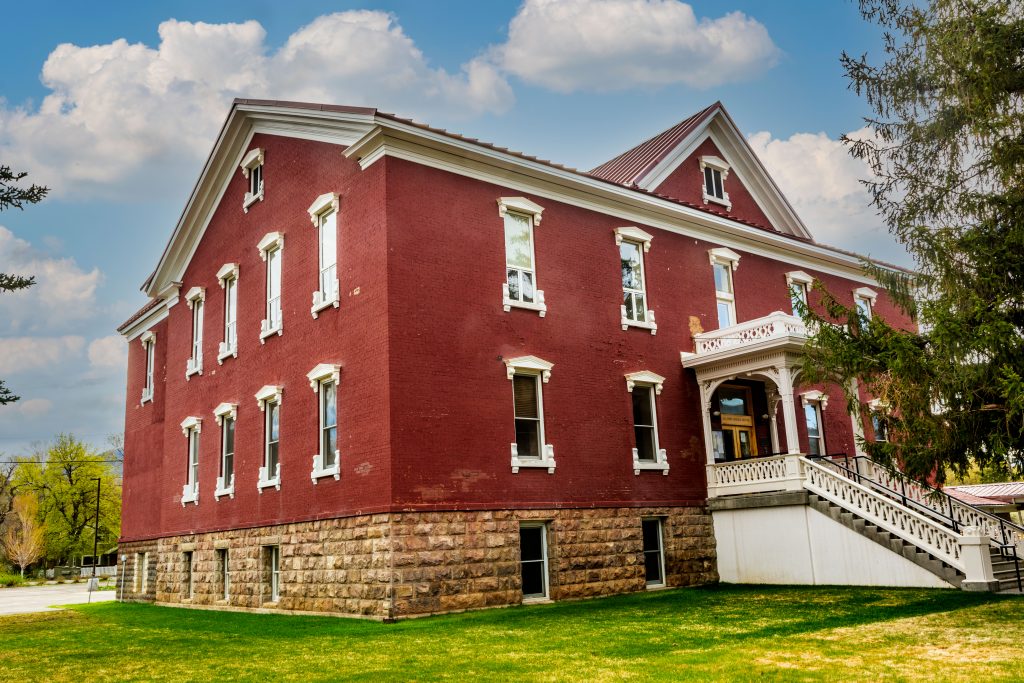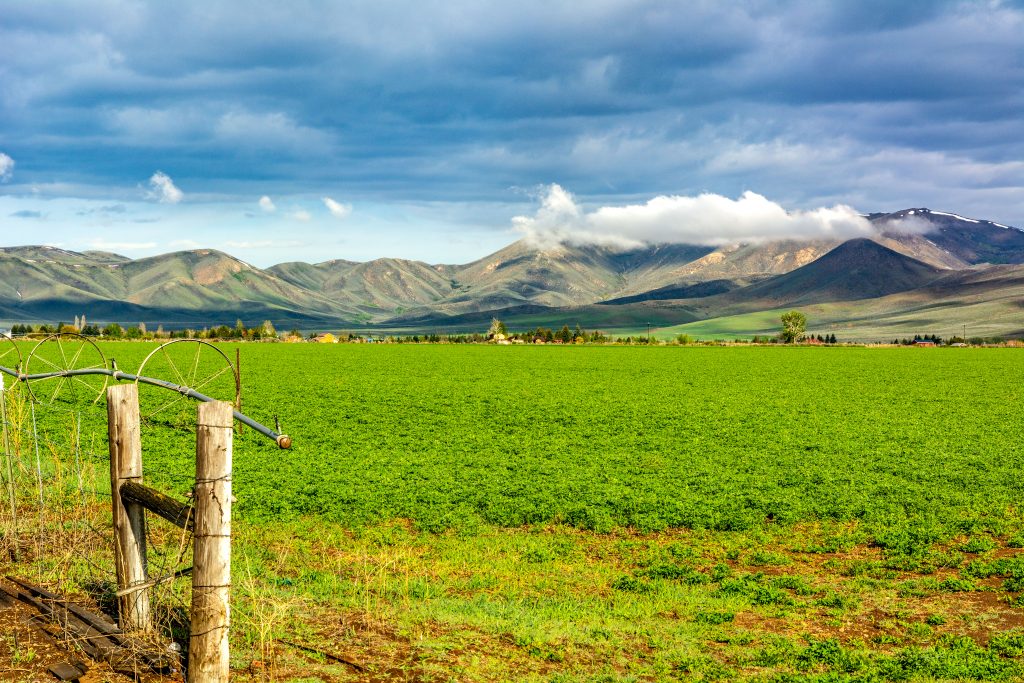Blaine County Idaho

Introduction to Blaine County
Blaine County, 5B on Idaho license plates, lies in the south central part of the state. Most residents live in the Wood River Valley between Ketchum and Gannett. Blaine County came into being when the Idaho State Legislature merged Alturas and Logan Counties in 1895. Almost immediately, Blaine County lost a great deal of its land to the creation of new counties. What ultimately remained was an oddly shaped piece of land covering 2,661 square miles. An unofficial estimate for 2020 shows 23,249 residents in the County,the highest count to date. The County’s name honors James G. Blaine, U.S. Senator from Maine, U.S. Secretary of State (twice) and unsuccessful Republican candidate for President.
A Condensed History of Blaine County Idaho
In 1864, the Idaho Territorial Legislature created seven counties. Four of these made up all of southern Idaho: Owyhee, Boise, Alturas, and Oneida. Alturas County filled most of the south central portion of the territory. The mining camp Rocky Bar served as seat for this vast area, until 1882 when Hailey took over that role.
Idaho became a state in 1890. For the next few years, the new State Legislature and the State Supreme Court fought several battles over county formation. In an end run around the Supreme Court, the Legislature merged Alturas and Logan Counties renaming the new entity Blaine. Almost immediately thereafter, the Legislature took the southern end of Blaine County for Lincoln County. Blaine lost more land in the creation of Power County in 1913. And again in 1917, it lost land in the creation of Butte and Camas Counties.
As much of the Intermountain West, the land that became Blaine County began as mining camps. In the 1870s, farmers came for the fertile lands of the Wood River Valley. Among the settlers, sheep herders moved in as well. The County’s website informs us that by 1920, Ketchum was “one of the leading sheep shipping centers in the U.S.”
Sun Valley and the Growth of Recreation
Sheep weren’t the only creatures to leave Blaine County in the 1910s and 20s. The County’s population dropped almost in half between 1910 and 1920, and another 16% in the next decade. It was clear that something would have to be done to revive the economy. And in 1936, the Union Pacific Railroad opened a new ski area in the mountains east of Ketchum. Sun Valley was the first ski area in the western U.S. It drew crowds, both for fun and for work. The County’s population grew over 40% between 1930 and 1940. With the exception of the 1960 Census, every count since has shown an increase.
And skiing isn’t all that Blaine County offers. Winter activities include snowmobiling, sledding and ice skating. Of course there is alpine and nordic skiing available both at Sun Valley and at Rotarun near Hailey. Spring, Summer and Fall activities including hiking, biking, fishing and hunting. Truly, Blaine County is a four-season recreational wonderland.
The downside of all that is that the Cost of Living in Blaine County is higher than the Idaho average. As a result, many Blaine County workers live outside the county and commute.
Hailey–Blaine County Idaho’s Seat
Blaine County inherited its seat and court house when the State of Idaho combined Alturas and Logan Counties in 1894. The Court House, built in 1883, served Alturas County and kept the same purpose for Blaine County. Even today, it still serves the County, although the County has built newer buildings to accommodate the expanded business.
John Hailey came West from Tennessee in 1853. After settling in Oregon’s Rogue River country, Hailey established a stage route from the Columbia River to the Boise Basin gold fields. Once in Idaho, he decided the Wood River Valley was ripe for settlement. Accordingly, he bought land and platted the town that bears his name. The City’s website has a fascinating article on the historic preservation of Hailey.
Hailey today is a city of almost 9,000 residents. Thoroughly modern, it is also proud of its heritage. Of 23 Blaine County places on the National Register, twelve are in Hailey. The city has put together a walking tour with a map available as a pdf file. One of the homes on that tour is the birth place of poet Ezra Pound. The Pound Home at 314 2nd Avenue South is now the property of the Sun Valley Museum of Art.
Ketchum and Sun Valley
Driving into Blaine County from the north, the first cities you come to are Ketchum and Sun Valley. A two-mile stretch of highway connects the two towns. And both depend on the ski area for much of their vitality. Ketchum’s website tells the story of how miners first came into the Wood River Valley. It also tells how trapper David Ketchum’s neighbors took his name for their new community. In 1929, one resident diverted water from a nearby hot spring and built a natatorium with cabins. Six years later, the Union Pacific bought the Brass Ranch to build the world-class ski resort Sun Valley. The review site Yelp.com lists forty-six restaurants in Ketchum, not one a national chain. This should be an extraodinary number for a town of less than 3,000 residents, but this is a resort community, after all.
Sun Valley adds another twenty-five restaurants to the total number of eateries in the two communities. It’s impossible to talk about the city without talking about the resort. Since its founding in 1936, the resort and the city have grown up together. Today the city has close to 1500 residents up from less than 500 when the city incorporated in 1947.
Annual Events in Ketchum and Sun Valley
Ketchum and Sun Valley host several annual events. These include various festivals, a TEDx event, and two celebrations of the region’s history. The Trailing of the Sheep involves most of the Wood River Valley. Wagon Days began in 1958 with a few horse and wagons parading in front of a crowd of a few hundred people. Today it is one of the largest non-motorized parades in the Northwest, with thousands of spectators. At the end of the parade, twenty mules pull six ore wagons through the streets of Ketchum. The ore wagons, built in Ketchum for the mining trade, are like nothing I’ve ever seen. Watch the 2013 finale here. Wagon Days takes place Labor Day weekend each September.
For a more sophisticated experience, Ketchum and Sun Valley host the Sun Valley Film Festival. They host the Sun Valley Music Festival as well. Formerly known as the Sun Valley Summer Symphony, the Music Festival is now a year-long celebration of music with a summer season and a winter season. The Sun Valley Jazz & Music Festival has brought Jazz musicians to the area for twenty years now. The festival promises five days of non-stop music each October. TEDxSunValley got its start in 2016. For 2020, because of our special circumstances, the talks were held either in the open or via zoom. And finally, if you prefer getting sweaty at your festivals, the Ride Sun Valley Bike Festival started in 2010. As Bike Magazine describes it, the festival is “ten days of events stacked into one amazing little community.” I hope it is still a going affair. I haven’t been able to find anything more recent than 2017.
Bellevue and Carey
Bellevue, just five miles south of Hailey, is the final Wood River Valley city you reach traveling from the north. With today’s population nearing 2,500, Bellevue would first appear to be Hailey’s little brother. Historically, however, Bellevue and Hailey were quite competitive. Indeed during a five-year period (1889-1895), Bellevue served as seat of Logan County while Hailey, just up the road, was seat of Alturas County. After the creation of Blaine County, the fortunes of Bellevue rose and fell until 1960 when the town had less than half its 1890 population. Since then, the population has grown steadily. Downtown Bellevue is a National Historic District with many 19th century buildings still standing. I must say that whoever wrote the Wikipedia entry for Bellevue must have had a dark mind. Many of the topics include murders, fires, an explosion and arrests for drunkenness, drug possession and embezzlement. I think I need to check out the town on my own.
Carey is Blaine County’s only city not in the Wood River Valley. A the junction of US 20 and US 26 and 93, Carey lies just west of the vast lava beds that cover so much of south central Idaho. In looks, Carey resembles many rural Idaho communities. This is more ranching country than mining. The mountains that flank the Wood River Valley are far away. The landscape is more rolling hills fading to flat land. My eye did catch one sight that made me pull over and grab my camera. Driving through town, I saw a garden full of tall metal sculptures. This is not something I expected to see in a town of 600 residents. Founded around 1884 by Mormon settlers, today Carey’s ties to the church remain strong. Seventy-five percent of Carey’s residents claim membership as Latter Day Saints.
Business and Industry in Blaine County, Idaho
As noted above, mining brought the first settlers to Blaine County. Looking at my DeLorme Atlas, many mines still appear on the map, especially in the area immediately west of Hailey. Farming brought the next wave of settlers, as well as the raising of sheep. Sheep are still celebrated in the County with an annual Trailing of the Sheep Festival each October. Curiously, the 2017 Census of Agriculture shows a (D)when talking about raising sheep in Blaine County. (D) indicates that the information has been withheld. Recreation has taken first place over the last eighty years. City-data.com shows that the most common work place for both males and females is in accommodation and food service. Health care and social assistance is second and retail trade is third. The county is growing so unsurprisingly the most comment occupation for males is construction.
My Drives Through Blaine County
As I was growing up, we made annual trips between California and western Montana. Idaho Highway 75 is one of the routes we would take, although seldom because other routes are faster. On April 24th, 2016, I drove south from Challis, Idaho, crossing into Blaine County. I continued on through Ketchum and Sun Valley, Hailey, and Bellevue. South of Bellevue I took the cutoff road, meeting US 20 north of Picabo. This led me on to Carey. All of the photographs included with this post were taken on that drive.
As always, there are many things I missed. On another trip, I would very much like to spend more time in Hailey. I would take the walking tour and visit the Draper Wood River Preserve. Magic Reservoir, the largest lake in Blaine County, might be worth a visit as well. Finally, I’m curious about the south eastern section of the County. Known locally as the Yale Area, it looks as if it doesn’t really belong in Blaine County. I’m not so curious though as to take a lot of time to explore a region that has only dotted lines for roads.
Endnotes
Websites for Blaine County, Idaho
| <Previous Idaho County: Benewah County | Next Idaho County: Boise County> |
| <Previous Post: Reviews of Two Important Books |
![]()




super article
Thank you.